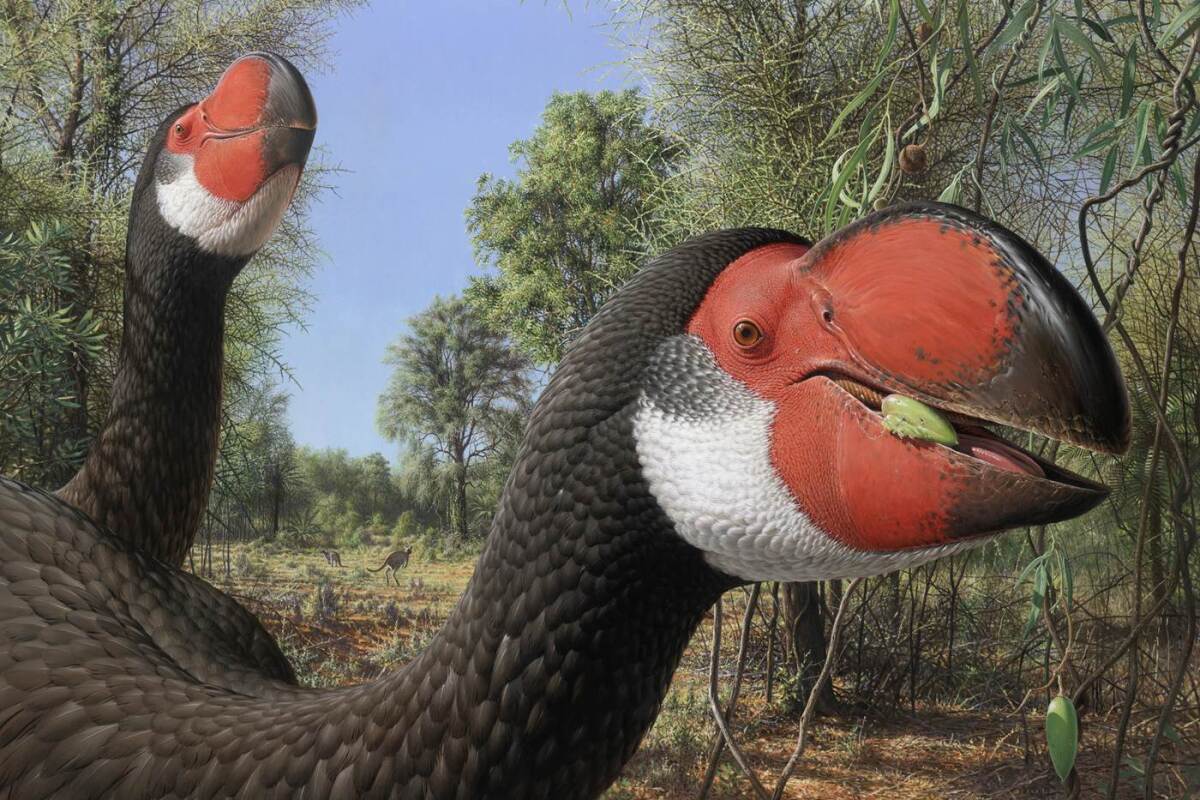The team focused on fossil skulls from four species of mihirungs that lived across that time range: Dromornis murrayi, which lived about 24 million years ago; Dromornis planei and Dromornis Ilbandornis, which both lived around 12 million years ago; and Dromornis stirtoni, from around 7 million years ago.
They made CT scans of the brain cases of these ancient birds, then created 3D models of them and compared them to similar (albeit smaller) modern relatives. Doing so revealed the size and shape of the brains, which most closely resembles that of the modern chicken. From this the scientists are able to recreate their biology and lifestyle.
“Together with their large, forward-facing eyes and very large bills, the shape of their brains and nerves suggested these birds likely had well-developed stereoscopic vision, or depth perception, and fed on a diet of soft leaves and fruit,” says Dr Warren Handley, lead author of the study.
The most recent species, Dromornis stirtoni, was particularly fascinating. The second-largest known bird to have ever lived, it sported a weird-shaped head that, the team says, would have led to an equally bizarre brain shape.
“This bird had the largest skull but behind the massive bill was a weird cranium,” says Trevor Worthy, senior author of the study. “To accommodate the muscles to wield this massive bill, the cranium had become taller and wider than it was long, and so the brain within was squeezed and flattened to fit. It would appear these giant birds were probably what evolution produced when it gave chickens free rein in Australian environmental conditions.”
The research was published in the journal Diversity.
Source: Flinders University via Scimex
–
–




















8 comments
Please keep comments to less than 150 words. No abusive material or spam will be published.
paul314
Username
Pierre Collet
Nelson Hyde Chick
Reptiles are classified as being cold blooded, and there is no way T-Rex was cold blooded.
Robert Baden
Reptiles are an incomplete group then, since dinosaurs and birds are their descendants. I do see birds being considered reptiles in a lot of places.
Signguy
ash
toni24
–
–